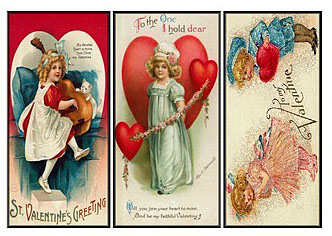 QUESTION: When I was a kid, I remember sitting on my grandfather’s lap in a very comfortable chair. It was designed like a big glove and swiveled on a chrome base with four legs. I don’t know what it was called, but I remember him referring to it as Danish modern. Can you tell me anything about this type of chair?
QUESTION: When I was a kid, I remember sitting on my grandfather’s lap in a very comfortable chair. It was designed like a big glove and swiveled on a chrome base with four legs. I don’t know what it was called, but I remember him referring to it as Danish modern. Can you tell me anything about this type of chair?ANSWER: You were very lucky indeed, for you got to experience the ultimate in Danish design, the Egg Chair, designed by Arne Jacobsen in 1957. But before we explore this chair further, it’s important to know how this design style came into existence.
In 1924,. Danish architect Kaare Klint was asked to teach a newly class in furniture design at the Royal Academy's School of Architecture in Copenhagen. Considered the originator of the modern Scandinavian style of furnishing and furniture design which thrived from the 1940s to the 60s, Klint’s influence on even today’s designs is great.
Using teak, which was plentiful in Denmark, the Danish Modern style began to emerge in the 1920s and soon gained popularity with cabinetmakers in Copenhagen.
After 1945, this unique style achieved worldwide recognition and by the mid-20th century, Danish modern had officially arrived.

He became the first Danish designer to combine function with Danish hand-craftsmanship. His drawings revealed an attention to the needs of the human body, long before the science of ergonomics came into being.
For instance, in order that his sideboards would be the most efficient, he determined the average dimensions of the cutlery and crockery used in a Danish home. Klint then created a case containing the smallest space required for the maximum amount of cutlery needed by a household. Aesthetically, he allowed the unvarnished teak to speak for itself, maximizing its clean beauty by waxing and polishing. And so Danish designers began using natural finishes for their pieces.
Klint is known as the grandfather of modern Danish design. He, more than any other Danish furniture designer, felt that it was important to understand the craftsmanship of the furniture of the past.

America's initial fascination with Danish modern furniture was largely the result of Edgar Kaufmann Jr. of the Museum of Modern Art in New York. He returned from Europe in 1948 with photographs of chairs designed by another Danish architect, Finn Juhl. The interest in Juhl's furniture led to a collection designed by him for the Barker Co.

Fruitful collaboration between designers and cabinetmakers led to more industrialized production. By 1950, a few factories in Denmark began producing furniture using purely industrialized methods. The new generation of designers included Arne Jacobsen, whose creations, while organic in nature, used materials such as light metals, synthetic resins, plywood, and upholstered plastics.
Graduating from the Royal Academy in 1924, Jacobsen soon demonstrated his mastery of both architecture and furniture design. With the completion of his Royal Hotel in Copenhagen with all its fittings and furniture in 1960, his talents became widely recognized.

Most of Jacobsen’s designs were the direct result of his belief that architecture and furnishings should be totally integrated. Two of his commissions—the Scandinavian Airlines Terminal and the Royal Hotel in Copenhagen—resulted from the creation of the uniquely shaped chairs, the “Egg” and the “Swan.” Designed in 1957, these modernistic chairs featured hi-density, rigid polyurethane foam, upholstered on single-seat shell construction. Both are extremely comfortable while being ergonomically sound and pleasing to look at.
There was a period of time in the middle of the 20th century when Danish designers were the world's most admired. Some of the most talented earned prizes at major competitions, and their works were quickly acquired by top European interior designers and collectors. Today, American designers see them suited to many different kinds of interiors.
To read more articles on antiques, please visit the Antiques Articles section of my Web site. And to stay up to the minute on antiques and collectibles, please join the over 30,000 readers by following my free online magazine, #TheAntiquesAlmanac. Learn more about the "Antiques of Christmas" in the 2021 Holiday Edition, online now. And to read daily posts about unique objects from the past and their histories, like the #Antiques and More Collection on Facebook.










